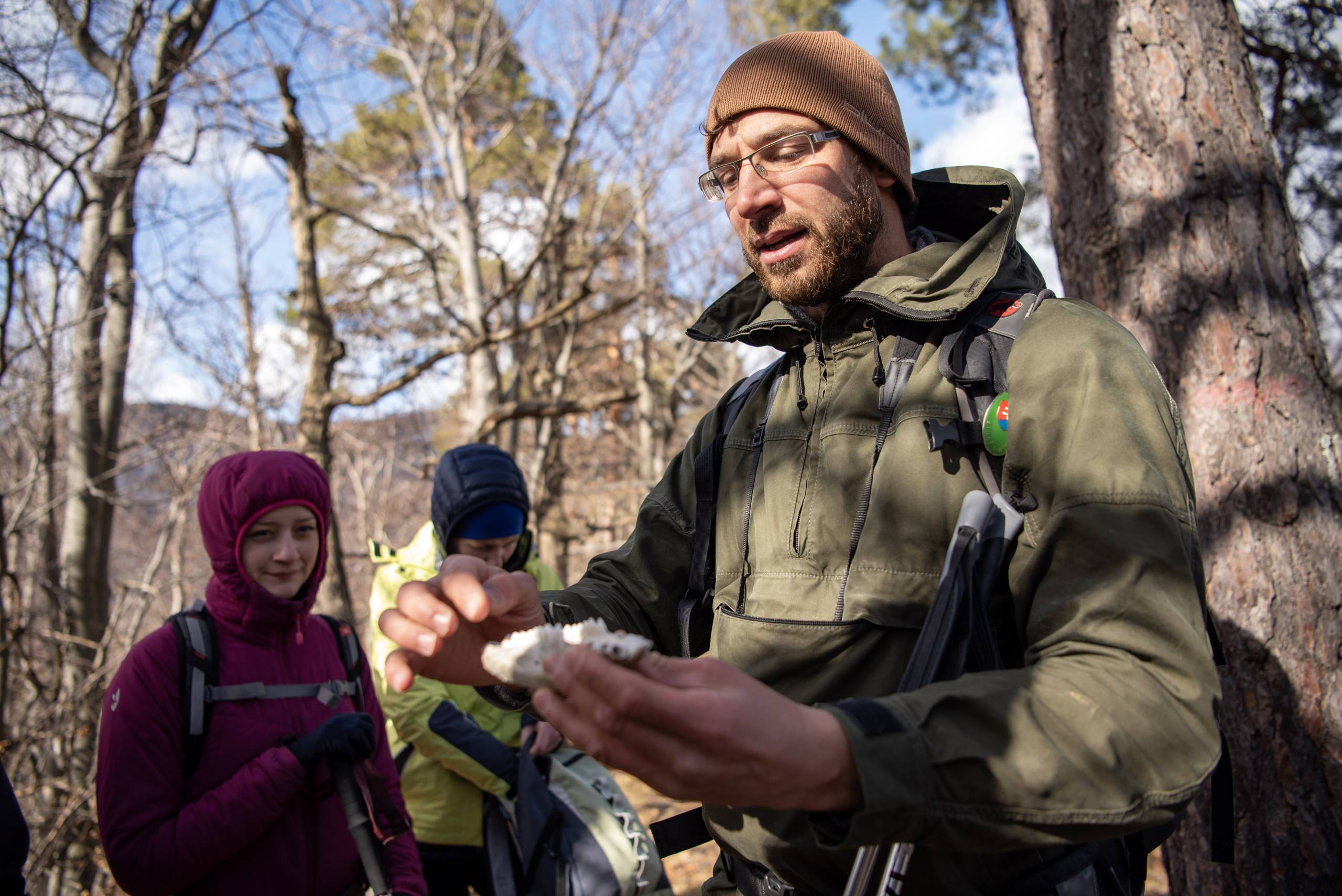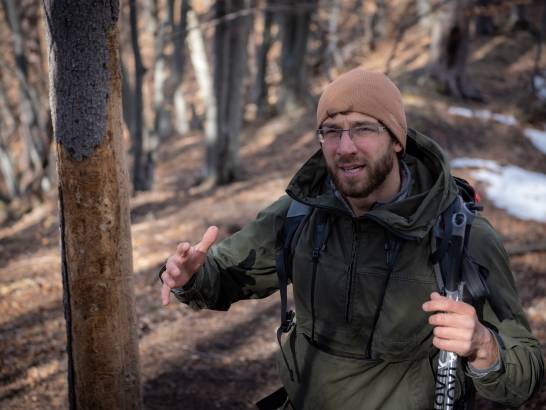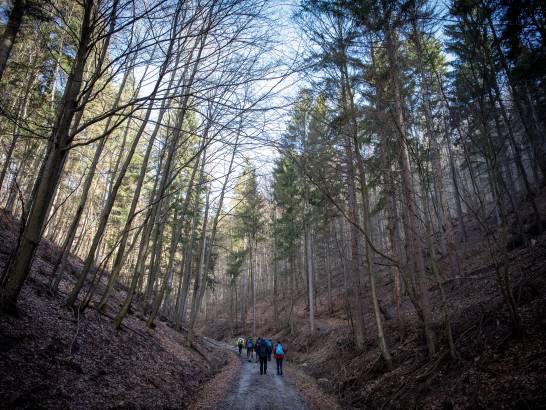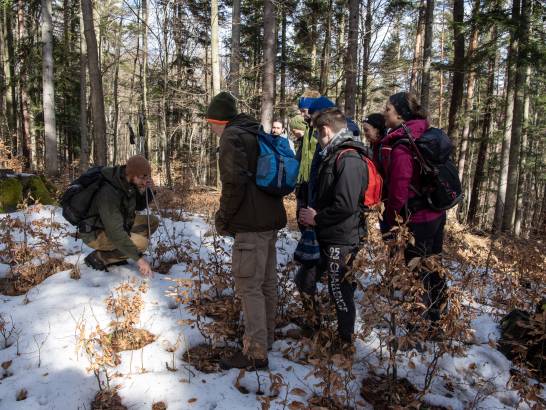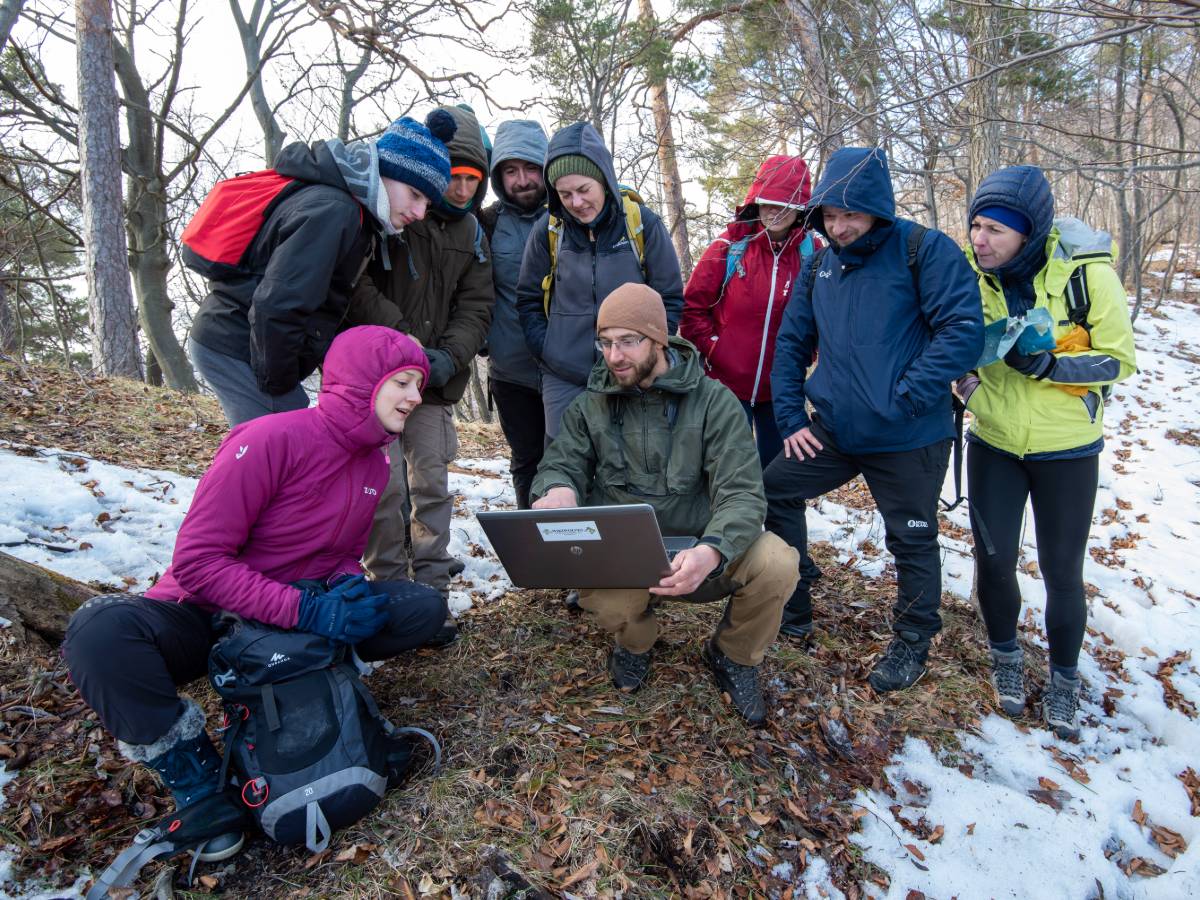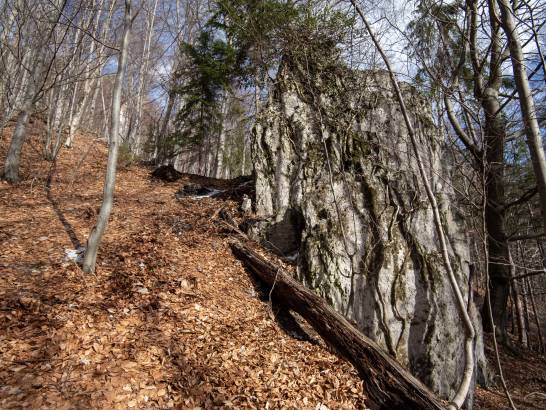Through knowledge to nature conservation / Interview with zoologist and ecologist Jerguš Tesák
Jerguš Tesák, a zoologist and ecologist, grew up in a rural environment, spending a lot of time in the mountains and forests with his brother and father since his early childhood. While he pursued other interests during his adolescence, he later felt a strong pull back to nature, which eventually became his calling. We bring you an interview with Jerguš Tesák, shedding light on his passion for the natural world.
Photo Source: Regional Tourism Organization Banská Bystrica Region Tourism
How did you get into the profession of being a zoologist and ecologist?
When I was young, I was always fascinated to see foxes, roe deer, deer during walks with my dog. It made me think that I would love to make a living working with these animals in the field. I started searching for ways to combine this interest with my career. A significant moment for me was a visit to a forester’s house when the forester’s wife mentioned that such a profession could be studied. From then on, I focused on pursuing a career in this field.
My passion for this work fully consumed me when I began studying ecology at the Technical University in Zvolen. It was here that I delved into zoology, focusing mainly on bats and large carnivores. After completing my studies, I started working at the Muránska Planina National Park, where I gained a comprehensive understanding of the forest, its ecosystem, and the local fauna. Later on, I engaged in research activities, particularly focusing on the Eurasian lynx. About seven years ago, a friend approached me and asked if I would be interested in leading nature excursions. After a few trips, I noticed that people greatly enjoyed it. I also realized that people are not only interested in large animals but also in small creatures and the intricacies of nature’s relationships.
What does the role of a nature guide encompass?
First and foremost, I need to get to know the environment where I plan to take people. I seek out interesting phenomena, plan the route, and assess its level of difficulty and length. However, before being able to do this job, I spent many years thoroughly exploring nature. Some aspects of nature are learned gradually, and during excursions, I must be able to react directly to these phenomena and explain them well to people.
This job is incredibly diverse. Continuous learning is crucial, involving direct observation of life in a given locality, as well as studying literature and consulting with experts. While my primary focus is on zoology, life in the forest is closely related to botany as well. Fortunately, I have many good friends who are botanists, and I can consult with them when needed. 🙂
Is it a full-time job?
Currently, I am just starting in this field, but I aspire to devote much more time to guiding. My goal for the near future is to be involved in legislative changes and to create a supportive environment for nature guides in ecotourism, so that we can finally offer in Slovakia what our nature has great potential for. Our country is very significant in terms of natural values, but we are weak in showcasing them to the public in the right way.
Where can we find you as a nature guide?
We organize guided excursions in Laskomerská valley where, in collaboration with the Regional Tourism Organization Central Slovakia, we offer the product „Become a Biologist for a Day and Explore Wild Laskomer.“ Additionally, we are preparing other locations in the region. We aim to expand our offering so that visitors can choose according to the length and difficulty of the route, as well as the theme that interests them (e.g., observing specific animal species or exploring our primeval forests).
In your opinion, what are some lesser-known locations in the Central Slovakia region that deserve attention?
The closest and most accessible is the Poľana protected landscape area, a biosphere reserve. It stands out not only for its wild nature but also for the traditions and traditional way of life of rural inhabitants. Then, certainly, Velká Fatra (mainly from the perspective of wilderness). There are large wild areas untouched by humans with interesting biotope types.
How would you convince a tourist who tends to choose more commercialized locations with high tourist traffic to visit, for example, Laskomer or Poľana? What makes these places particularly exceptional in your opinion?
When people venture into nature, they usually view it in a landscape-oriented way. They admire the beautiful hills, forests, and the pleasant weather. Nature tourism carries added value. During an excursion, tourists learn interesting facts about how nature functions, what lives in it, its problems, and how our presence or society as a whole affects it. Nature tourism is a form of tourism where one learns about nature. Besides taking a walk, visitors will learn many fascinating things about the forest processes, such as why bark beetles attack trees, under what circumstances, what happens in such a forest, how wolf packs function, or which is the world’s fastest bird. It’s like a more immersive and interactive hike.
In the case of Laskomer, its „wildness“ is intriguing, despite being located near a relatively large city (Banská Bystrica). Various owl species, such as the smallest owl, the Eurasian Pygmy Owl, Long-eared Owls, and different songbird species like the Goldcrest, find their nests high up in the tree canopies. Tree cavities, which were once created by woodpeckers, now serve as habitats for these animals. Brown bears and even Eurasian lynx also call this place home. In the past, wood tar makers also operated here, and I would gladly tell you the story during a walk :).
In Poľana, there are primeval forests, which is remarkable considering the mining, colonization by Wallachian settlers, and industrial exploitation that occurred in the area. Despite this, the forests have remained largely untouched by humans, if at all. Two wolf packs also live here. We have more interesting locations prepared in the vicinity of Banská Bystrica, and we are planning further topics, so stay tuned for surprises.
You already answered my next question, which was about the added value of guided excursions. Would you like to add anything else?
My motto is: „Through knowledge to nature conservation.“ The more people know about nature, the stronger their connection to it becomes, and consequently, they become more caring about its well-being.
How should we behave in nature? In your opinion, what do tourists forget (intentionally or unintentionally), or what are they not aware of?
The winter is still fresh in my mind, and I would like to touch upon the topic of ski touring. I am also a ski mountaineer and enjoy skiing. It is essential to choose locations for sports activities after researching what kind of animals live there. Studying the visitor’s regulations of national parks is also a good step. One specific problem is freeriding outside the permitted areas, which causes concerns, especially for the capercaillies living at the upper forest boundaries. When one skier occasionally passes through the trees, it can manage, but when ten skiers pass through daily, it forces the capercaillie to keep relocating and flying, which unnecessarily expends energy that is hard to regain during the winter. For the capercaillie, this poses an existential problem.
On the other hand, as a representative of nature conservation, I believe that we should communicate these issues more and, most importantly, in a positive manner, to motivate people to leave some areas for wild nature.
„Become a biologist for a day and explore wild Laskomer“ is a guided tourist hike with expert commentary. With zoologist and ecologist Jerguš Tesák, you will learn many fascinating facts about the local fauna and flora. You will discover the secrets of the old forest, track animals, set up camera traps, and thanks to them, see what life in the forest is like when we are not watching. The experience can be booked at bit.ly/3sxItma.
